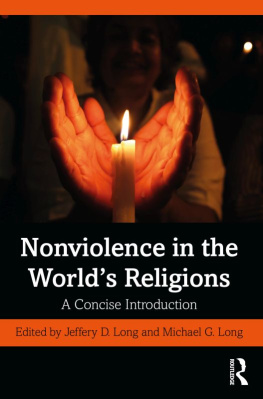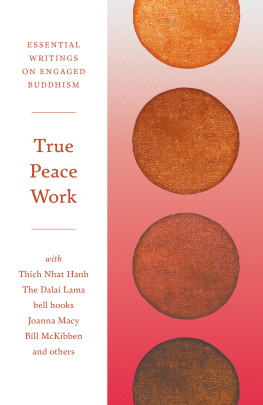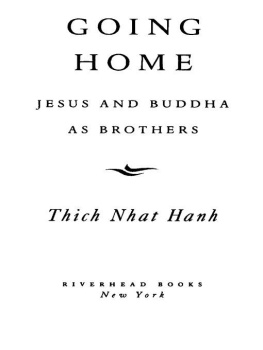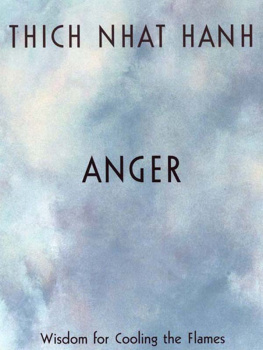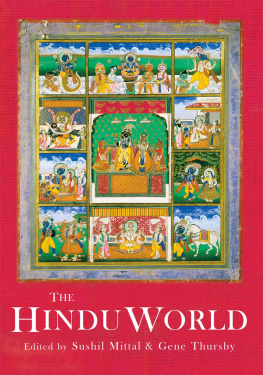Understanding
World Religions
A Road Map for Justice and Peace
Second Edition
David Whitten Smith
and
Elizabeth Geraldine Burr
ROWMAN & LITTLEFIELD
LanhamBoulderNew YorkLondon
Published by Rowman & Littlefield
A wholly owned subsidiary of The Rowman & Littlefield Publishing Group, Inc.
4501 Forbes Boulevard, Suite 200, Lanham, Maryland 20706
www.rowman.com
16 Carlisle Street, London W1D 3BT, United Kingdom
Copyright 2015 by Rowman & Littlefield
First edition 2007.
Except where otherwise indicated, translations of the Bible are from the New American Bible, including the Revised New Testament and the Revised Psalms 1969, 1970, 1986, 1991, 2010 Confraternity of Christian Doctrine, Washington, DC. Used by permission.
The lead quotation of , Native American Worldviews, is reprinted from: Black Elk Speaks: The Complete Edition by John G. Neihardt by permission of the University of Nebraska Press. Copyright 2014 by the University of Nebraska Press. Original printings copyright 1932, 1959, 1972 by John G. Neihardt. 1961 by the John G. Neihardt Trust.
In , brief excerpt from pp. 6023 from The Gulag Archipelago 19181956: Volume 2 by Aleksandr I. Solzhenitsyn. Copyright 1973 by Aleksandr I. Solzhenitsyn. English language translation copyright 1974 by Harper & Row, Publishers, Inc. Reprinted by permission of HarperCollins Publishers.
All rights reserved. No part of this book may be reproduced in any form or by any electronic or mechanical means, including information storage and retrieval systems, without written permission from the publisher, except by a reviewer who may quote passages in a review.
British Library Cataloguing in Publication Information Available
Library of Congress Cataloging-in-Publication Data
Smith, David Whitten, 1937
Understanding world religions : a road map for justice and peace / David Whitten Smith
and Elizabeth Geraldine Burr.Second Edition.
pages cm
Includes bibliographical references and index.
ISBN 978-1-4422-2642-5 (cloth : alk. paper)ISBN 978-1-4422-2643-2 (pbk. : alk.
paper)ISBN 978-1-4422-2644-9 (electronic) 1. Religions. 2. Religion and
justice. 3. PeaceReligious aspects. 4. Church and social problems. I. Burr,
Elizabeth Geraldine, 1950II. Title.
BL80.3.S65 2015
201.7dc23
2014015014
The paper used in this publication meets the minimum requirements of American National Standard for Information SciencesPermanence of Paper for Printed Library Materials, ANSI/NISO Z39.48-1992.
Brief Contents
Detailed Contents
Preface
I n 1987, the University of St. Thomas inaugurated a minor in justice and peace studies. We decided that it would be important to study how peoples worldviews affect the choices they make that promote or inhibit justice and peace. At the time, our program was unusual. Not many people in this country understood why it would be not only useful but even essential to understand other peoples world-views. After the September 11, 2001, attacks on the World Trade Center and the Pentagon, the country started coming around to our point of view. In 1987, there was no textbook available to introduce what we wanted to talk about, so David Smith started to write one and shared it with his students in duplicated form over his twenty years of teaching the courses. Elizabeth Burr became the books secondary coauthor for the first Rowman & Littlefield edition (2007), and together we have co-revised the text for the second edition (2015). Many other people have helped along the way. This book, now in its second edition, is the result.
In the course Theologies of Justice and Peace, for which this book was originally designed, in addition to reading and discussing this book, each student was asked to research one worldview that differs from her own, using a series of steps to organize her study. At the end of the semester, students read and discussed each others projects. When we duplicated this book in its earlier forms for their use, we included in the book extensive instructions and other aids for that study project. Since we could not predict how many people would be interested both in the content of this book and in the instructions for such a project, we decided to put the instructions on the World Wide Web at http://courseweb.stthomas.edu/justpeace/Rowman.html. Here we will briefly describe what is available there.
DETAILED PROJECT INSTRUCTIONS FOR STUDENTS AND FACULTY
Students are instructed how to study a worldview according to the following eleven steps:
1. Describe your own worldview and presuppositions by answering the nine sets of questions given. (Those steps are summarized in the introduction to this book.) This step will help you (a) to think about many things you have taken for granted, (b) to become aware of the variety in our own class, and (c) to accept and value our differences. The step is graded pass-fail.
2. Describe what you know as you begin your study: the worldview you have chosen to study, what you know or dont know about it as you start, what you want to find out.
3. Select a local resource to help you with your study, preferably someone who lives the worldview you are studying.
4. Experience the worldview through a vicarious experiencea narrative such as a novel, memoir, autobiography, film, play, interview, or foreign travel. We are looking here for stories, not yet for academic information or analysis.
5. From academic research, describe the main ideas and practices of the world-view, especially with regard to justice, peace, prosperity, and security.
6. List and describe briefly the main sacred books, classics, and traditions (including oral traditions) of the worldview. Read parts meditatively and report on the experience.
7. Describe how some real person has been influenced by the worldview in their work on behalf of justice and peace, or how some community living the worldview has responded in some real conflict. This step will consider what happens when one person or a group attempts to live out the worldviews ideals in the actual, messy world.
8. Rewrite your responses to the questions of step one as if you personally held the worldview you have been studying.
9. Write a utopia that would make sense to someone holding the worldview. What would a perfect world be like, why isnt the world like that, what is the best situation we might hope for in the real world (a possi-topia), and how might we move toward that better future?
10. Reflect on your study. Compare what you know and believe now with what you did in step 2 when you started. Did your study confirm your expectations, challenge, or surprise you? How helpful was your local resource of step 3? How could this course be improved?
11. Give us a list of the resources you used with comments for future studies indicating how useful each item was, and for what steps it was useful.
Extensive resource lists for the project: For the last twenty years, we have been assembling the annotated resource lists that our students have produced (step 11 above)you can see their comments on books, periodical articles, websites, and more.
OTHER TREASURES ON OUR WEBSITE
Space limitations have prevented us from publishing everything we would like to share. Some of what didnt fit is already or will be available at our website.
Two sets of maps showing Native American and Palestinian loss of land.
Footnote lists for each chapter and a bibliography list, all with active hotlinks, so that one can read the book in front of the computer or notepad and jump quickly to materials mentioned in the footnotes and bibliography with a click of the mouse or a tap on the screen.


